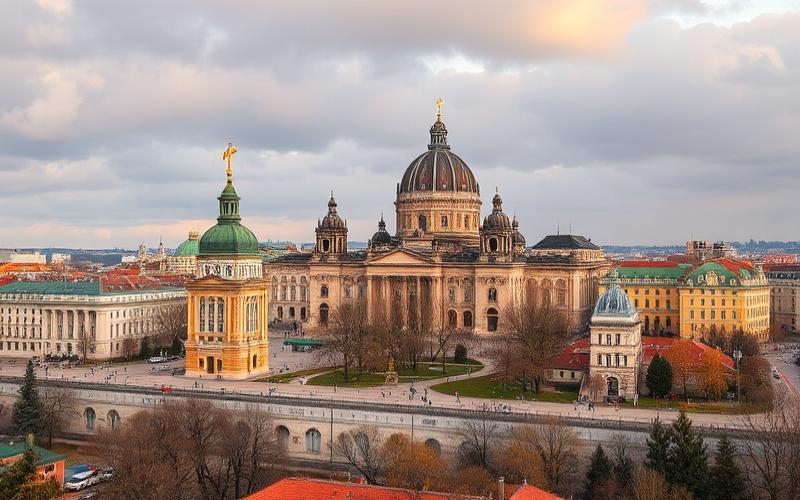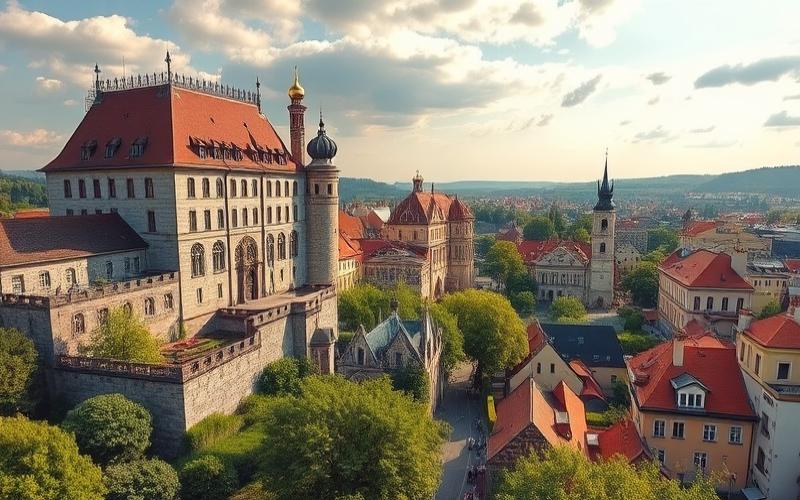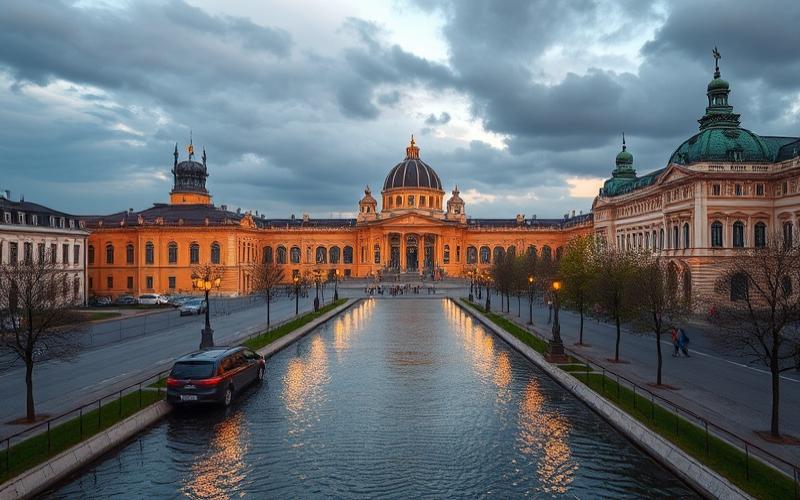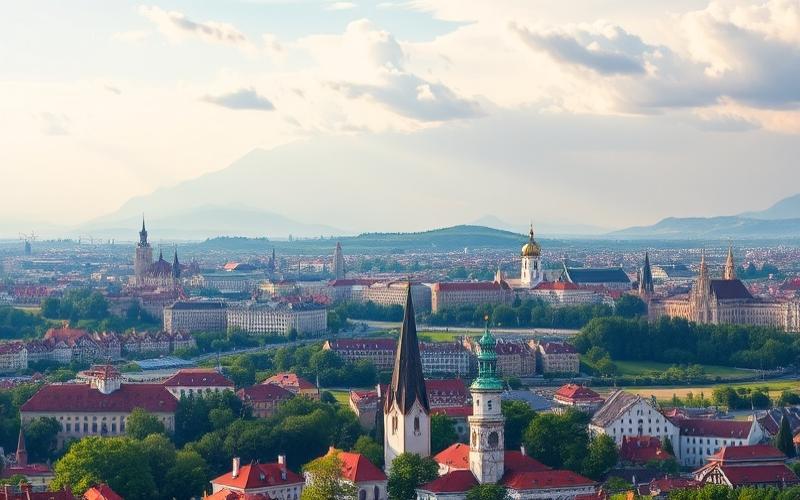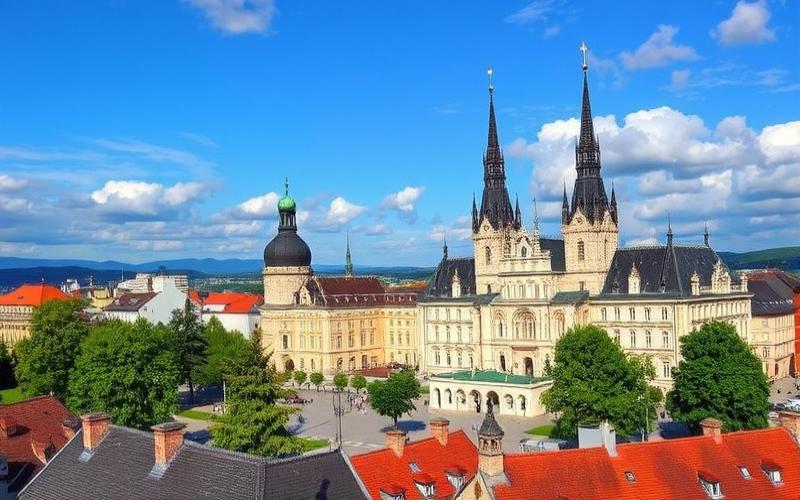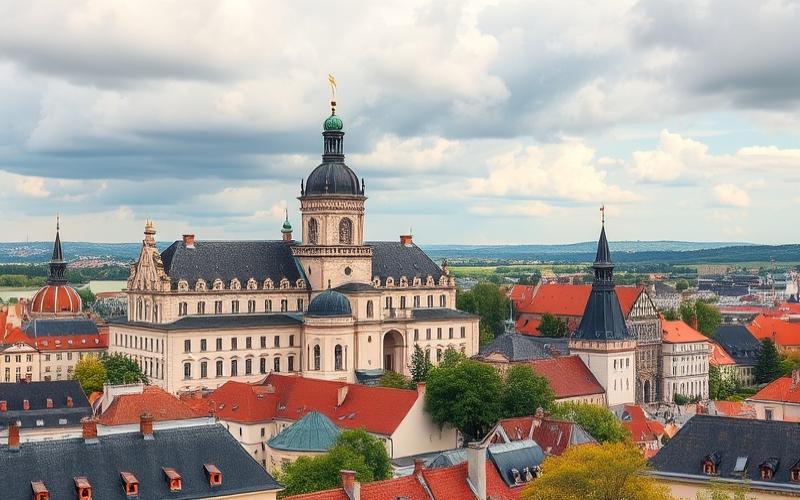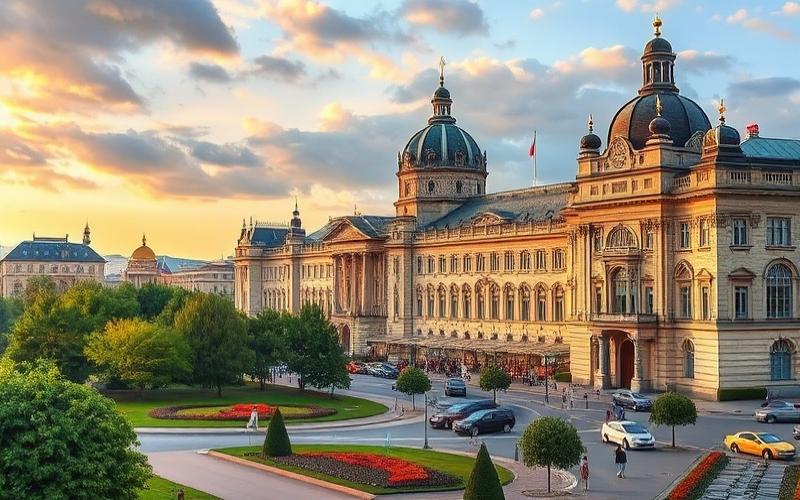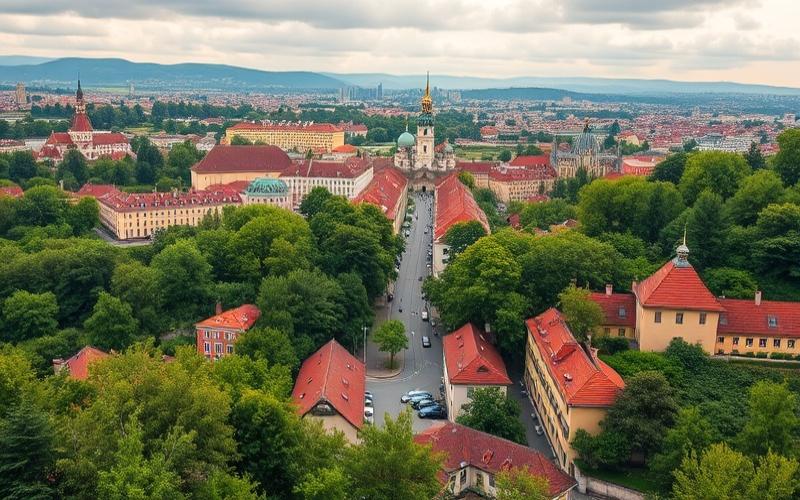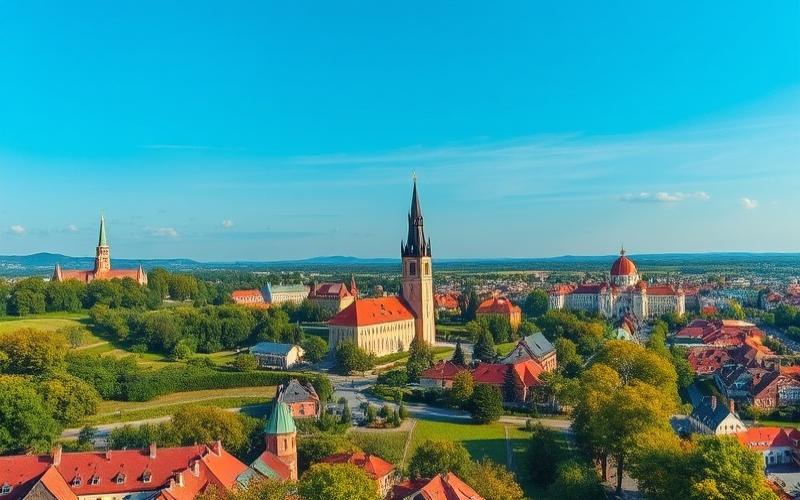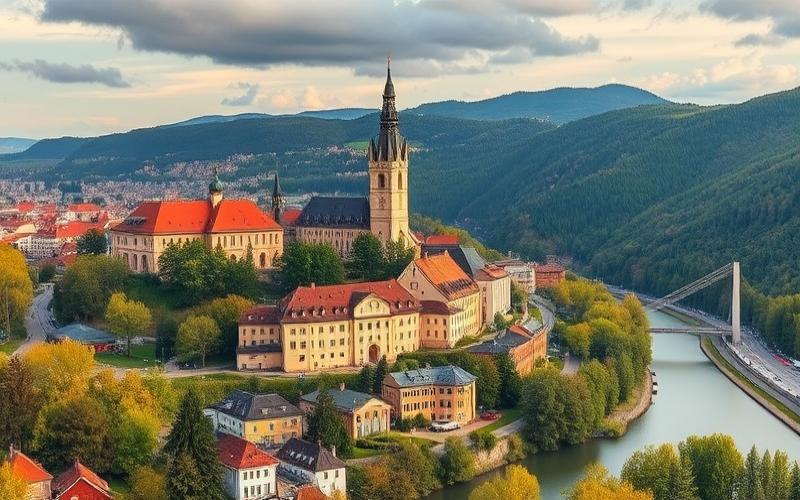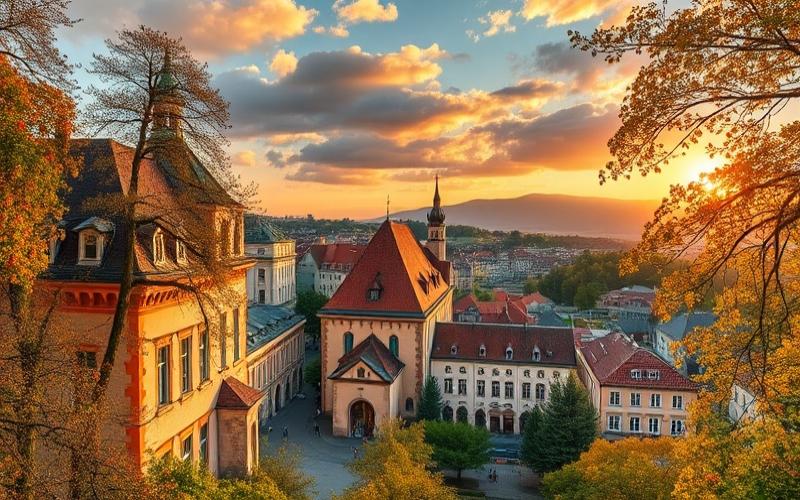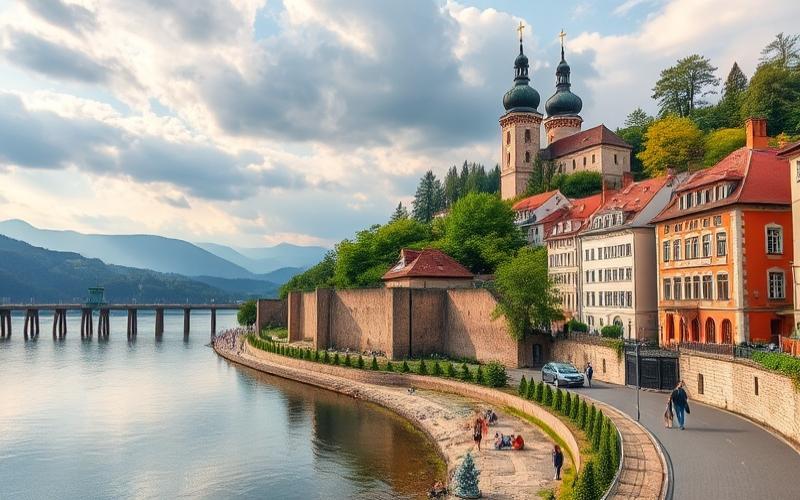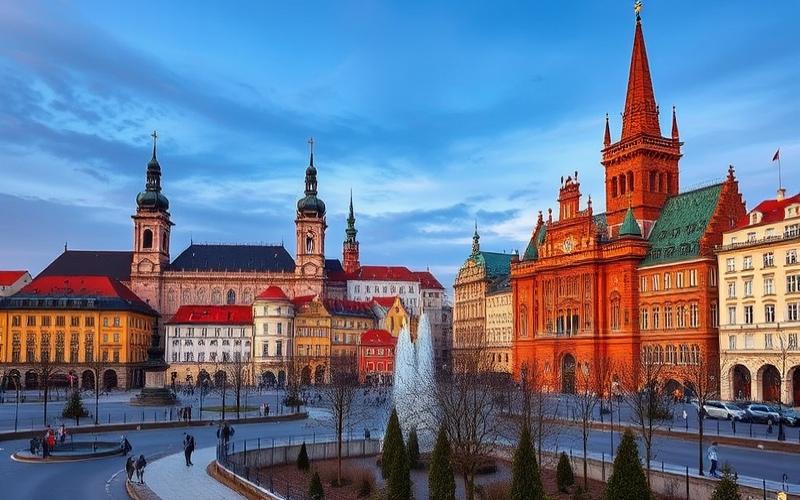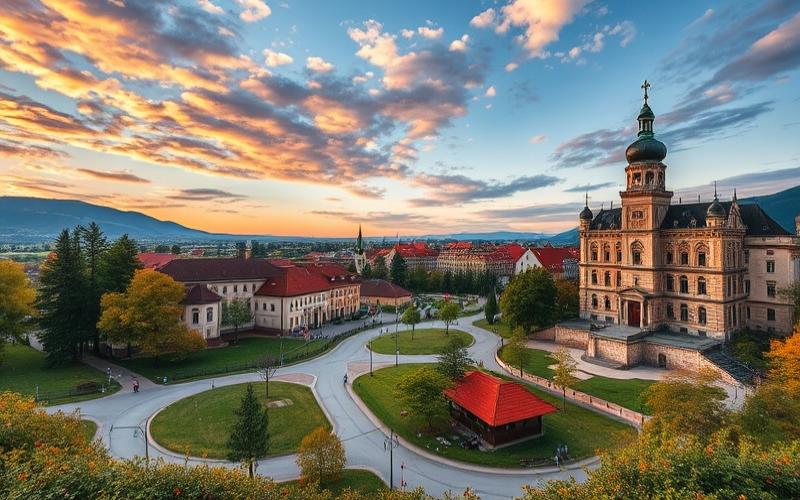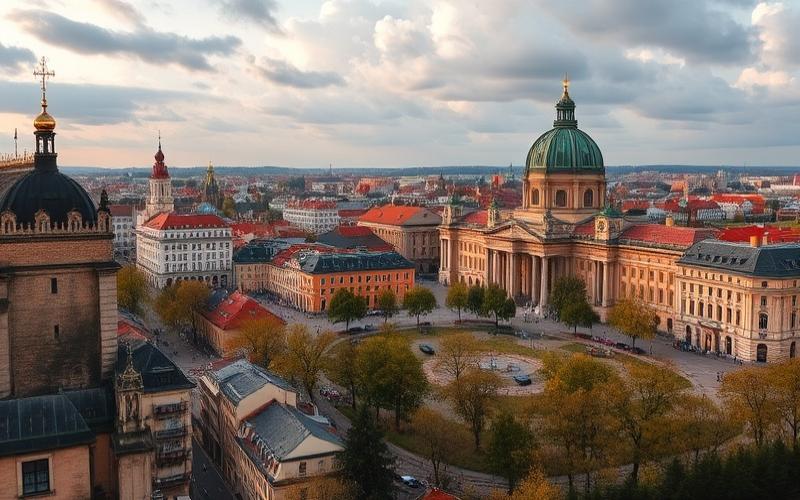
 Published on and written by Cyril Jarnias
Published on and written by Cyril Jarnias
Poland, a country of picturesque landscapes and rich history, is also a true treasure for food lovers seeking new flavors. This culinary guide invites expatriates to discover the richness of Polish gastronomy, a unique blend of Slavic, German, Jewish, and Lithuanian traditions.
Whether you’re drawn to savory pierogi, smoked kielbasa, or comforting barszcz, each dish tells a story and reveals a facet of Polish culture.
Prepare to awaken your taste buds and immerse yourself in an unforgettable culinary experience, where every meal is an open door to authentic and warm heritage.
Exploring Poland’s Culinary Specialties
Cuisine holds a central place in Polish culture, symbolizing both hospitality and national identity. Shared meals are opportunities to celebrate family bonds and perpetuate traditions passed down through generations. Recipes, often crafted with local and seasonal products, reflect the richness of the land and the country’s history.
Iconic Dishes:
- Pierogi
These Polish dumplings, a national emblem, are made from stuffed dough, then boiled or sometimes fried. Fillings vary: potato and cheese, sauerkraut and mushrooms, meat, or even fruit for the sweet version. Their origin dates back to the Middle Ages, and they are served during major family or religious occasions. - Bigos
Often called “Polish hunter’s stew,” this simmered dish combines sauerkraut and fresh cabbage, various meats (pork, sausages, game), mushrooms, and dried plums. Bigos is cooked over several days to develop its flavors and embodies the conviviality of large Polish gatherings. - Barszcz
This vibrant red beet soup is often garnished with sour cream and sometimes with dumplings (uszka). Barszcz is inseparable from religious holidays, especially Christmas, where it is served as a starter during the Wigilia dinner on Christmas Eve.
| Dish | Main Ingredients | History and Usage |
|---|---|---|
| Pierogi | Flour, eggs, potato, cheese | Holidays, family meals |
| Bigos | Sauerkraut, meat, mushrooms, plums | Simmered dish for special occasions |
| Barszcz | Beet, broth, cream, uszka | Wigilia starter, holidays |
Unique Culinary Traditions:
- Christmas Wigilia is one of the most important meals of the year. It begins with the appearance of the first star and includes 12 meatless dishes, including barszcz, pierogi, carp, and kutia. This dinner symbolizes respect for ancestral customs and family unity.
- Sharing the opłatek (Christmas wafer) before the meal, accompanied by wishes, reflects the value placed on hospitality and solidarity.
- The taste for fermented foods and local products (rye bread, pickles, wild mushrooms) highlights the importance of nature and local craftsmanship.
Tips for Expatriates:
- The regions of Krakow and Warsaw are renowned for the diversity of their traditional restaurants.
- To taste authentic bigos, visit inns in central Poland or taverns in the southern mountains.
- Pierogi are a must-try in Krakow (restaurants “Pierogarnia Krakowiacy,” “Starka”) or Warsaw (“Zapiecek,” “Restauracja RDEST”).
- To experience Wigilia, some places like “U Babci Maliny” in Krakow or “Podwale Kompania Piwna” in Warsaw offer typical holiday menus.
Polish gastronomy wonderfully illustrates the country’s hospitality and rich cultural heritage.
Through its generous dishes and culinary traditions, Poland invites everyone to discover a culture where conviviality, respect for the land, and the joy of celebration are found at every table.
Polish cuisine is the art of welcoming and passing on, a living heritage at the heart of every home.
Good to Know:
Krakow is particularly famous for its authentic pierogi, while Warsaw offers trendy spots to enjoy a reinvented bigos. Remember to book well in advance for the Wigilia dinner, an unmissable experience that will immerse you in the warmth of Polish family traditions.
From One Traditional Market to Another: Where to Shop
In Poland, traditional markets are lively places, blending commerce and culture, where one discovers the authenticity of Polish gastronomy. Two of the most emblematic markets are Hala Mirowska in Warsaw and Stary Kleparz in Krakow.
| Market | City | Cultural and Historical Importance | Opening Days & Hours |
|---|---|---|---|
| Hala Mirowska | Warsaw | Bustling covered market, witness to Warsaw’s popular commerce since the 19th century. It reflects the city’s resilience and cultural diversity. | Open Monday to Saturday, generally from 6 AM to 6 PM. |
| Stary Kleparz | Krakow | Oldest continuously operating food market in the city, dating from the 19th century. Heart of local product trade and a place for intergenerational encounters. | Open Monday to Saturday, approximately from 6 AM to 6 PM. |
Typical Local Products to Discover:
- Artisanal Charcuterie: kielbasa (Polish sausage), smoked hams, traditional cured meats.
- Regional Cheeses: oscypek (smoked cheese from the Tatras), twaróg (fresh cheese).
- Seasonal Vegetables and Fruits: potatoes, beets, cabbage, apples, plums, currants, mushrooms from Polish forests.
- Bakery Products: pączki (filled doughnuts), rye bread, pretzels.
- Regional Specialties: pierogi (stuffed dumplings), ogórki kiszone (fermented pickles).
Tips for a Great Market Experience:
Prefer early morning hours (from 6-7 AM) to enjoy the widest selection and freshest products.
Approach vendors with a smile, greet them in Polish (Dzień dobry), and don’t hesitate to ask about the origin of the products.
Haggling isn’t systematic but is possible, especially at the end of the day or if buying in bulk. Remain courteous, show interest in the producer’s work, and offer a reasonable price.
Bring a reusable bag and cash, as not all stalls accept credit cards.
Role of Markets in Polish Cuisine and Culture:
Traditional markets are the beating heart of Polish cuisine. They provide access to fresh, local ingredients essential for preparing traditional dishes like bigos, pierogi, or żurek. Strolling through these markets means immersing yourself in the country’s living history, observing regional diversity, and interacting directly with producers, offering an authentic glimpse into Polish food culture.
Tip:
Visiting markets during local festivals or special seasons (Christmas, Easter, autumn) allows you to discover unique products and specialties unavailable outside these periods.
Summary of Polish Traditional Markets’ Assets:
- Quality and freshness of products
- Human encounters and authenticity
- Discovery of regional flavors
- Immersion in Poland’s living history
Good to Know:
Discover Hala Mirowska in Warsaw or Stary Kleparz in Krakow, open early until late afternoon, where charcuterie, cheeses, and native vegetables abound; learn the art of haggling with vendors for an immersive experience in Polish cuisine.
Table Etiquette in Poland: Tips and Advice for Expatriates
Upon arrival, it is essential to greet the staff and fellow diners with a handshake or a simple hello, a sign of respect and politeness.
- Wait to be seated by the host, who often assigns seats.
- Never start eating before the host invites you to, usually by saying smacznego.
- During meals, it is customary to make toasts using the phrase Na zdrowie while maintaining eye contact until the glass is placed back on the table.
- Refusing a toast may be frowned upon, but it is acceptable to politely indicate that you don’t drink or are unwell.
| Rule | Recommended Behavior |
|---|---|
| Greetings | Handshake or hello |
| Seating | Wait for the host to seat you |
| Toasts | Say “Na zdrowie” and maintain eye contact |
| Start of Meal | Wait for the host’s invitation |
| Refusing a Dish | Politely decline with an explanation |
Choice and Use of Cutlery
- Use the knife in your right hand and the fork in your left.
- Start with the utensils farthest from the plate for each course served.
- Utensils placed above the plate are reserved for dessert.
- To signal the end of the meal, place your utensils parallel on the plate, handles to the left, blades and tines toward the center.
Bread and Accompaniments
Bread is generally served without butter or a dedicated plate.
It is common to use bread to accompany sauces and finish a dish, using it to discreetly soak up the sauce.
Gestures and Conversation at the Table
- Keep your hands visible, rest your wrists on the table, but never place your elbows on it.
- Do not reach across the table to grab a dish or utensils; ask for them to be passed, always to the left.
- Avoid leaving the table before the meal ends, except in an emergency.
- Conversation topics should remain neutral and avoid politics or religion during large family or official meals.
- Avoid pointing, raising your voice, or interrupting someone.
Tips for a Friendly Environment
- Accept second helpings and taste everything.
- Thank the host at the end of the meal for their hospitality and the quality of the food.
- To politely refuse a dish, briefly explain (diet, allergies, etc.) without insisting, so as not to offend.
List of Gestures to Avoid:
- Putting feet on the table or leaning on it.
- Leaving too much food on the plate (except a small amount to show you are full).
- Refusing a toast without justification.
- Speaking loudly or monopolizing the conversation.
Always thank the host after the meal, in person and, ideally, with a message or call the next day to express your gratitude and strengthen social bonds.
Good to Know:
In Poland, always greet the staff and your fellow diners upon arrival, wait for the host to invite you to start eating, and make a toast by saying “Na zdrowie”; to refuse a dish without offending, a simple “thank you, I’m full” will suffice. Use the appropriate cutlery for each dish, accompany meals with bread, place your utensils parallel on the plate at the end, avoid gesturing while speaking, and don’t forget to warmly thank your hosts after the meal.
Iconic Restaurants and Contemporary Culinary Trends
Iconic Restaurants in Polish Gastronomic History
| Restaurant Name | City | Specialty/Influence | Chef or Iconic Dish |
|---|---|---|---|
| Bottiglieria 1881 | Krakow | First restaurant in Poland to earn two Michelin stars. Refined and creative cuisine, open to the world. | Chef Adrian Kaczmarek. Dishes: “Fish and Peas,” “Country Pork.” |
| Pod Wawelem | Krakow | Historic brewery with waitresses in costume. Festive atmosphere, traditional Polish dishes. | Pierogis, popular ambiance. |
| Pod Aniolami | Krakow | Medieval restaurant in a cellar, traditional cuisine and historical decor. | Specialties of meats and fish. |
| Warszawa Wschodnia | Warsaw | Polish bistro cuisine, tasting menu, open kitchen. | Chef Mateusz Gessler. Tasting menu. |
| Soul Kitchen | Warsaw | Return to roots, seasonal menu, local products. | Reimagined traditional dishes. |
| Folk Gospoda | Warsaw | Folkloric entertainment, typical dishes, authentic venue. | Pierogis, bigos, entertainment. |
| Muga | Poznań | 1 Michelin star, elegant cuisine, international influence. | Scallops, roasted duck. |
Anecdotes and Notable Figures
Bottiglieria 1881 in Krakow made history by earning two Michelin stars, symbolizing international recognition for the creativity and maturity of its chef, Adrian Kaczmarek. The seemingly simple names of his dishes hide great complexity of flavors and execution.
Mateusz Gessler is a Franco-Polish chef known for popularizing a bistro approach to Polish cuisine in Warsaw, notably with Warszawa Wschodnia, where one can enjoy reimagined classics in a modern and friendly setting.
Iconic Dishes That Contributed to Their Reputation
Pierogis (stuffed dumplings), bigos (Polish hunter’s stew), barszcz (beet soup), as well as contemporary creations based on local products and innovative presentations.
Contemporary Culinary Trends in Poland
Promotion of Local and Organic Products
Restaurants like Soul Kitchen or Metr Nad Ziema offer seasonal menus based on fresh, local, often organic ingredients.
Modern milk bars (Milkbar Tomasza, Green Day) revisit the tradition in a veggie or healthy version.
Fusion Cuisine and International Influences
The restaurant NUTA (Warsaw) by chef Andrea Camastra blends Italian, Asian, and Polish traditions, illustrating the fusion trend.
Venues such as Sushi Kado (Japanese) or Le Cèdre 61 (Lebanese) reflect a cosmopolitan scene, while restaurants like Laxmi (Indian) in Łódź are praised for their authenticity.
Emerging Chefs and Addresses
The arrival of starred restaurants like Muga in Poznań illustrates the rise of a new generation of chefs who combine international know-how with respect for Polish terroir.
New concepts are emerging: wine bars (Winni in Łódź), salad bars (Chimera in Krakow), and trendy brunches (Charlotte Chleb i Wino).
Practical Tips for Expatriates Wishing to Explore Polish Culinary Culture
- Prefer guided food tours to discover the history and local flavors in several establishments during one itinerary.
- Participate in Polish cooking classes (preparing pierogi, bigos, traditional desserts) to learn local techniques and ingredients.
- Try both milk bars (bars mleczny) for authenticity and contemporary restaurants for innovation.
- Don’t hesitate to explore international cuisine spots to appreciate the dynamism and diversity of the current culinary scene.
For a complete experience, alternate between historic institutions and innovative new tables, and dare to go off the beaten path to discover Poland’s culinary richness.
Good to Know:
The restaurant Atelier Amaro in Warsaw, Poland’s first Michelin-starred restaurant, embodies the fusion of contemporary techniques and local ingredients, while young chefs like Aleksander Baron influence the current culinary scene with menus inspired by world cuisine; for immersion, participate in a food tour or traditional cooking class.
Disclaimer: The information provided on this website is for informational purposes only and does not constitute financial, legal, or professional advice. We encourage you to consult qualified experts before making any investment, real estate, or expatriation decisions. Although we strive to maintain up-to-date and accurate information, we do not guarantee the completeness, accuracy, or timeliness of the proposed content. As investment and expatriation involve risks, we disclaim any liability for potential losses or damages arising from the use of this site. Your use of this site confirms your acceptance of these terms and your understanding of the associated risks.



